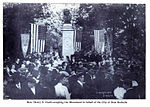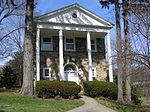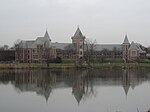Thomas Paine Cottage

The Thomas Paine Cottage in New Rochelle, New York, in the United States, was the home from 1802 to 1806 of Thomas Paine, author of Common Sense and Revolutionary War hero. Paine was buried near the cottage from his death in 1809 until his body was disinterred in 1819. It was one of a number of buildings located on the 300 acre farm given to Paine by the State of New York in 1784, in recognition of his services in the cause of Independence. It was here in August 1805 that he wrote his last pamphlet, which was addressed to the citizens of Philadelphia on "Constitutional Reform". The cottage has been owned by the "Huguenot and New Rochelle Historical Association" and has been operated as a historic house museum since 1910. The cottage is open to the public most Fridays, Saturdays and Sundays 10–5 p.m.. There are numerous weekend events scheduled at the cottage throughout the year including their Colonial Fair in the spring and Colonial Tavern night during ArtsFest in October and a Toys for Tots drive in December. The cottage hosts many local school field trips.
Excerpt from the Wikipedia article Thomas Paine Cottage (License: CC BY-SA 3.0, Authors, Images).Thomas Paine Cottage
Sicard Avenue,
Geographical coordinates (GPS) Address Nearby Places Show on map
Geographical coordinates (GPS)
| Latitude | Longitude |
|---|---|
| N 40.934472222222 ° | E -73.791166666667 ° |
Address
Sicard Avenue 20
10804
New York, United States
Open on Google Maps





